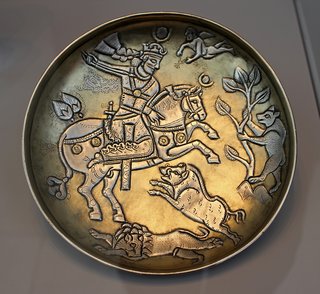How Sasanian Science and Literature passed on to the Muslims
A Reassessment of Cultural Transfer by Translation in Late Antiquity

This project aims to challenge the paradigmatic notion “Graeco-Arabic Translation Movement.” This labeling is a byproduct of research conducted during the last two centuries on how the classical writings passed on to Arabic in the early Islamic period. It suggests that translations were done mainly from Greek; and furthermore, the studies on which it is based emphasize the transmission of philosophy and natural sciences to the detriment of other fields, e.g. history, law, belles-lettres, particularly religious works.
The project makes the case that a better judgment of the phenomenon of translation in early Islam can be made by considering the overall spectrum of translation in its late antique historical context, consisting of Roman east and the Sasanian Empire. The record of the passage of Greek-Hellenistic science to Syriac and then to Arabic delineates the Western chapter of this process and has received a formidable amount of philological investigation. It is thus the still unwritten ‘Oriental’ chapter of this moment in the history of cultural transfer that will be our primary concern here: the position of Middle Persian in the spreading of Greek, Indian and Iranian scientific, literary and religious writings.
Contrary to common perception, our working hypothesis claims that translation was a firmly grounded, officially supported and flourishing discipline in Sasanian society on the eve of Islam, given the multicultural, multilingual, and multireligious nature of the empire. As an accredited intellectual institution, translation practice continued steadily from the early Sasanian era to the early Islamic times. Change of political rulers was not concomitant with change of ancient institutions. Albeit a temporary slowdown due to the turmoil caused by the wars of Islamic conquests, (local) traditions of scientific inquiry and exchange of ideas persisted for the most part unbroken. New in this socio-cultural matrix was the arrival of Arabic as a recipient player. The steady growth of Arabic to a universal language and the lingua scientia of the newly established expansive Islamic Empire eventually led to the reorientation in the field of the ongoing translations; Arabic became a unifying medium for a range of literary languages.
To substantiate this hypothesis, the project will be pursued in two steps. First, it will compile an inventory of Middle Persian literature that was acquired by means of translation, and incorporate relevant findings of previous studies. Subsequently, it will investigate the complex motives at work which furthered the choice of texts for translation into Arabic, documenting and discussing how the Sasanian accumulated learning and expertise passed on to the Muslims.
Link: More information about the project (application text)
Duration
06.2022 – 06.2025
Funded by

Affiliated Persons

Former Affiliated Persons


